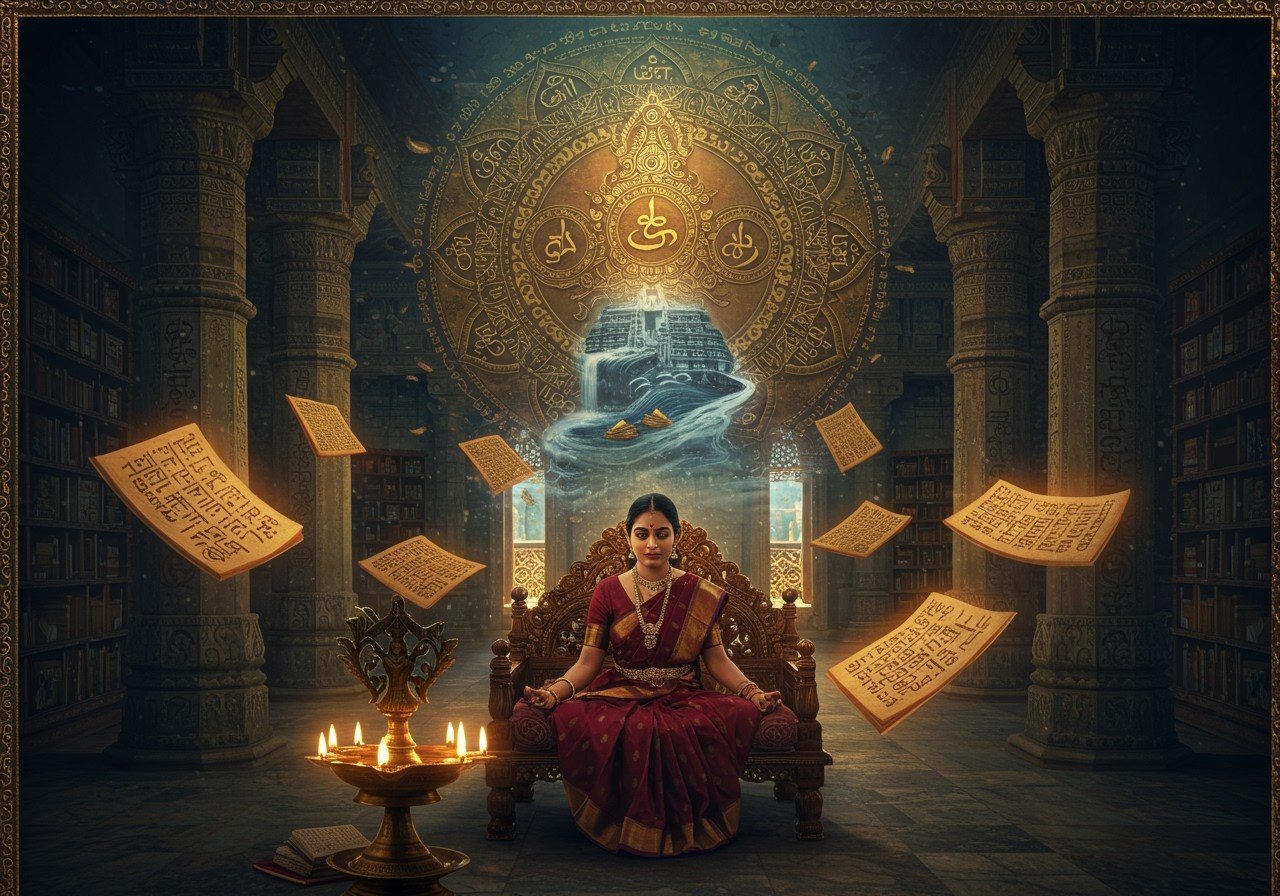
Sangam Literature, a cornerstone of ancient Indian culture, unveils a treasure trove of knowledge about the Tamil region’s early history, society, and literary customs. This article delves into the languages of Sangam literature, exploring their significance and enduring impact on contemporary languages. Understanding these languages unlocks a deeper appreciation for the cultural and historical tapestry woven within this literary gem.
The Languages of Sangam Literature
Primarily composed in ancient Tamil, Sangam literature reflects the rich linguistic heritage of the Tamil-speaking region. ‘Sangam’ signifies the assembly of poets who contributed to this body of work during the Sangam period (circa 300 BCE to 300 CE). This period’s literature is categorized into three main sections:
- Ettuthokai (Eight Anthologies): This collection comprises eight anthologies of poems, showcasing the diverse themes and styles of Sangam poetry.
- Pathuppattu (Ten Idylls): These ten long poems offer detailed narratives and descriptions, providing valuable insights into the lives and landscapes of the time.
- Pathinenkilkanakku (Eighteen Lesser Texts): This category includes eighteen shorter texts that cover various subjects, including ethics, grammar, and prosody.
Sangam Tamil possesses unique linguistic characteristics in its syntax, phonology, and morphology. Notable Tamil poets like Thiruvalluvar, author of the Thirukkural, have made invaluable contributions. Recognized as a classical language, Tamil has gracefully evolved over time, retaining its cultural significance.
Sangam Literature’s Influence on Malayalam
The influence of Sangam literature extends to Malayalam. Early Malayalam, deeply influenced by Tamil, embraced various Sangam literary forms and themes, exemplified by the ‘Manipravalam’ literary style, a blend of Sanskrit and Malayalam. This linguistic transition from Tamil to Malayalam was significantly shaped by Sangam literature. Prominent Malayalam literary figures drew inspiration from these ancient texts, and scholars in Kerala continue to preserve and study them.
Sangam Literature in English
English translations of Sangam literature have made these works globally accessible. Key translators like G.U. Pope and A.K. Ramanujan played pivotal roles in bridging the linguistic gap. Translating ancient Tamil texts into English presents unique challenges, such as preserving the poetic essence and cultural nuances. Renowned English translations include the Thirukkural and the Purananuru, enriching global understanding and appreciation of Tamil culture.
Cultural Significance of Sangam Literature
Sangam literature offers profound cultural and societal insights into ancient Tamil society, illuminating its social structure, customs, and daily life. Themes of love (Aham) and war (Puram) resonate throughout Sangam poetry, interwoven with ethical and philosophical teachings like those in the Thirukkural. The depiction of nature and geography in Sangam texts paints a vivid picture of the Tamil landscape and environment.
Sangam Literature stands as a testament to ancient Tamil society between 300 BCE and 300 CE. Notable works include the Tolkappiyam and the Ettuttokai.
Sangam literature’s role in preserving Tamil cultural identity and heritage is paramount. These texts continue to influence contemporary Tamil culture, arts, and literature. Ongoing efforts to study, preserve, and promote Sangam literature underscore its enduring significance.
Frequently Asked Questions about Sangam Literature
What is the significance of Sangam literature? Sangam literature holds immense historical, cultural, and linguistic importance. It provides a unique glimpse into ancient Tamil society, its values, customs, and daily life, illuminating a crucial period in South Indian history.
Are there any famous works in Sangam Literature? Yes, renowned works include the “Ettuthokai” (Eight Anthologies), “Pattuppāṭṭu” (Ten Idylls), and “Pathinenkilkanakku” (Eighteen Lesser Texts), each offering unique insights into the Sangam period.
How old is Sangam literature? Sangam literature dates back to between 300 BCE and 300 CE, marking it over 2000 years old and one of the world’s oldest extant literary traditions.
Poojn.in: Your Gateway to Tamil Cultural Goods
Poojn.in, India’s leading cultural goods and services store, provides a wide selection of products to support your exploration and celebration of Tamil culture. Whether you’re seeking traditional attire, ritual items, or religious texts, Poojn.in offers a diverse collection to enhance your connection with Tamil heritage. Explore our offerings today and discover the richness of Tamil culture.
- Sakha by Poojn: Perfect for traditional ceremonies and rituals.
- Jati Kapali Ghata: Essential for various Tamil Hindu rituals.
- Paita by Ashim Banerjee: A sacred thread worn in many Tamil Hindu traditions.
Further Exploration of Tamil Culture
Delve deeper into Tamil culture and heritage with these insightful blog posts:
- Ramayana’s Impact on Indian Art and Literature
- Ramayana’s Influence on Hindu Spirituality
- Nira River Sangam: Importance and Cultural Impact


